New Delhi – Recent satellite imagery has revealed the extensive damage inflicted upon Iran Nuclear Facilities following Israeli strikes that began on June 13. These Iran Nuclear Facilities have been systematically targeted as part of Israel’s “Operation Rising Lion,” with multiple critical sites sustaining significant damage across the country’s nuclear and military infrastructure.
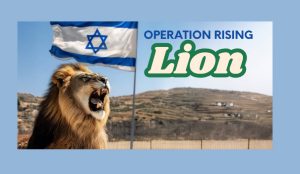
The strikes on Iran Nuclear Facilities have raised serious concerns among international observers, particularly the UN watchdog IAEA, regarding potential contamination and radiation leaks. Newly released satellite images provide clear evidence of the precise damage Israeli forces have caused to Iran Nuclear Facilities and the broader nuclear program infrastructure.
Isfahan Nuclear Technology Center Damage Assessment
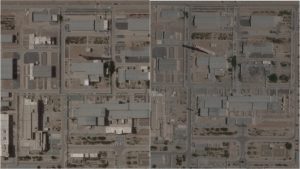

The Isfahan nuclear technology center, one of the most significant Iran Nuclear Facilities, has sustained considerable damage from Israeli strikes. This facility represents the region’s largest nuclear research complex and serves as a cornerstone of Iran’s nuclear development program. Satellite imagery clearly shows the before and after conditions of this critical installation.
According to IAEA assessments, four critical buildings at the Isfahan site among Iran Nuclear Facilities have been damaged due to Israeli attacks. The facility’s strategic importance to Iran’s nuclear research capabilities makes this strike particularly significant in the broader context of regional nuclear proliferation concerns.
Natanz Nuclear Facility – Underground Enrichment Center


The Natanz nuclear facility, Iran’s biggest uranium enrichment center and one of the most crucial Iran Nuclear Facilities, has reportedly suffered severe damage to its underground operations. The International Atomic Energy Agency has confirmed that Israeli strikes may have “severely damaged” the underground centrifuges at this facility, with some potentially “destroyed altogether.”
This particular facility among Iran Nuclear Facilities has been a focal point of international scrutiny due to its uranium enrichment capabilities. The underground nature of the Natanz facility was designed to protect it from aerial attacks, making the successful targeting of this installation particularly significant for regional security dynamics.
Shiraz Missile Production Complex
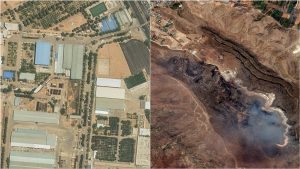

The Shiraz missile production facility represents a critical component of Iran’s military infrastructure, working in conjunction with Iran Nuclear Facilities to support the country’s defense capabilities. This complex reportedly manufactured, repaired, and stored ballistic missiles, making it a prime target for Israeli forces seeking to degrade Iran’s missile capabilities.
Satellite imagery reveals substantial damage to both the missile production plant and associated electronics facilities. The targeting of this site demonstrates Israel’s comprehensive approach to degrading Iran’s military capabilities alongside attacks on Iran Nuclear Facilities.
Tabriz North Missile Base Operations
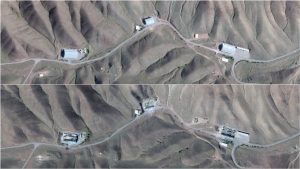

The Tabriz north missile base, while not directly part of Iran Nuclear Facilities, serves as a key ballistic missile production unit supporting Iran’s overall military capabilities. Satellite images depicting before and after conditions show significant damage to checkout buildings and operational infrastructure at this northern facility.
This facility’s destruction contributes to the broader campaign against Iran’s military production capabilities, complementing strikes against Iran Nuclear Facilities to create a comprehensive degradation of Iran’s strategic capabilities.
Piranshahr Military Installation
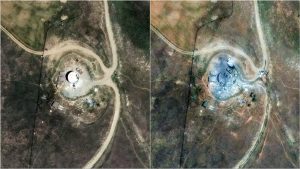

Located near the Iraqi border in western Iran, the Piranshahr facility serves as a military building supporting Iran’s regional operations. While not directly classified among Iran Nuclear Facilities, this installation plays a supporting role in Iran’s broader military infrastructure network.
The facility’s strategic location near international borders makes it significant for Iran’s regional projection capabilities and supply chain operations supporting various military programs, including those related to Iran Nuclear Facilities.
Additional Targeted Military Infrastructure
Israeli forces have struck numerous other key nuclear and military installations beyond the primary Iran Nuclear Facilities. These include the Kermanshah missile facility, Bid Kaneh missile facility, and Shahid Modarres Garrison rocket production facility, all of which support Iran’s broader military capabilities.


Notably, the Israeli Defense Forces have yet to target the Fordow fuel enrichment plant and the Arak nuclear facility, both significant components of Iran Nuclear Facilities. These remaining installations continue to operate and may represent future targets in ongoing military operations.
International Monitoring and Concerns
The strikes against Iran Nuclear Facilities have prompted serious concerns from international monitoring agencies, particularly regarding potential environmental and health impacts. The IAEA continues to assess damage to Iran Nuclear Facilities and monitor for any signs of radioactive contamination or facility breaches.
International observers emphasize the importance of maintaining safety protocols at Iran Nuclear Facilities even during military operations, as damage to nuclear infrastructure poses risks extending far beyond immediate military objectives.
Ongoing Conflict Escalation
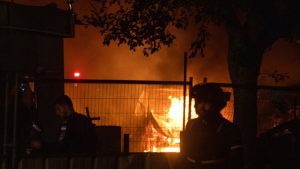

The attacks on Iran Nuclear Facilities occur within the broader context of the Israel-Iran conflict, which has now entered its fifth consecutive day. The conflict escalated significantly after Israel’s comprehensive strikes across Iran targeting both military bases and Iran Nuclear Facilities as part of “Operation Rising Lion.”
Since the initial strikes on Iran Nuclear Facilities, both nations have exchanged regular missile and drone attacks, resulting in over 220 casualties in Tehran and 24 in Israel. Both countries have promised to carry out their “largest attacks” against each other, raising concerns about further escalation.
Strategic Implications and Future Outlook
The systematic targeting of Irani Nuclear Facilities represents a significant escalation in regional tensions and demonstrates Israel’s commitment to preventing Iran’s nuclear program advancement. The comprehensive nature of these strikes against Irani Nuclear Facilities suggests a coordinated strategy to degrade Iran’s nuclear capabilities substantially.
As global allies call for urgent de-escalation, the damage to Irani Nuclear Facilities will likely influence future diplomatic negotiations and regional security arrangements. The international community continues monitoring the situation closely, particularly regarding the long-term implications for nuclear non-proliferation efforts and regional stability in the Middle East.

